Copenhagen is very much having its moment. Its culinary scene, led by Chef Rene Redzepi of top-ranked Noma restaurant, is world-renowned, and its design scene is always at the forefront of setting trends. But there’s plenty more going on in the Danish capital to entice visitors, especially in up-and-coming neighborhoods like Norrebro and Vesterbro. I am only here for a long weekend so I have a lot of ground to cover. Thankfully, the city is compact enough to walk just about everywhere, but there’s also a very efficient train and plenty of bicycles, which is how the locals get around.
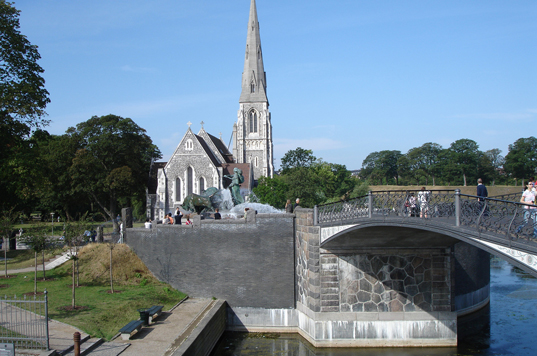 I meet up with a well-connected Copenhagener named Henrik who will give me a tour of Norrebro, a now trendy area with plenty of top-notch eateries. Our first stop is Kiin Kiin—a Michelin-starred Thai restaurant where Henrik arranged a meet and greet and a few bites with the affable and adorable chef, Henrik Yde-Andersen, who is also a TV personality (he is a judge on the Danish Master Chef). After living in Thailand for four years and mastering Thai cooking, he and his partner opened Kiin Kiin and several more restaurants including a low-key curry house next door. Our next stop was Norrebro Bryghus, a micro-brewery opened by a former Carlsberg brewmaster in an old brick-walled factory from the ‘30s. We sampled hand-crafted ales including the Golden Spike IPA, which went down quite smoothly.
I meet up with a well-connected Copenhagener named Henrik who will give me a tour of Norrebro, a now trendy area with plenty of top-notch eateries. Our first stop is Kiin Kiin—a Michelin-starred Thai restaurant where Henrik arranged a meet and greet and a few bites with the affable and adorable chef, Henrik Yde-Andersen, who is also a TV personality (he is a judge on the Danish Master Chef). After living in Thailand for four years and mastering Thai cooking, he and his partner opened Kiin Kiin and several more restaurants including a low-key curry house next door. Our next stop was Norrebro Bryghus, a micro-brewery opened by a former Carlsberg brewmaster in an old brick-walled factory from the ‘30s. We sampled hand-crafted ales including the Golden Spike IPA, which went down quite smoothly.
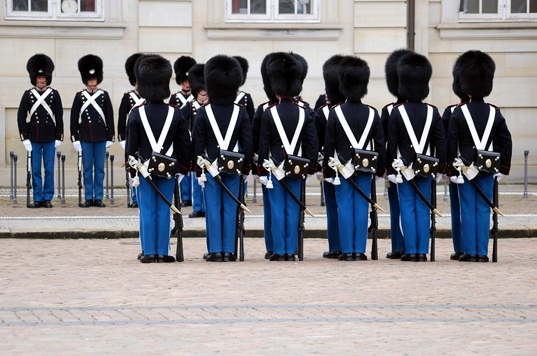
As we made our way past the enormous Assistens Cemetery, where several famous Danes including Hans Christian Andersen and philosopher Kierkegaard are buried, Henrik remarked that five years ago visiting the cemetery was the only reason tourists would venture to this area, but times have certainly changed. Our final stop was Restaurant Manfred’s on the edge of Norrebro on Jaegersborggade, a formerly crime-ridden street that’s been turned into a co-op style strip where all the businesses support each other. Chef Christian Puglisi trained at both Noma and El Bulli (his sister restaurant Relae is across the street). We sampled caramelized Jerusalem artichoke and a spicy beef tartare. In keeping with the co-op spirit, Puglisi uses coffee from Coffee Collective, a micro-roaster with a cult following, bread from super popular Meyer’s Bakery and Inge Vincents ceramics, all just steps away.
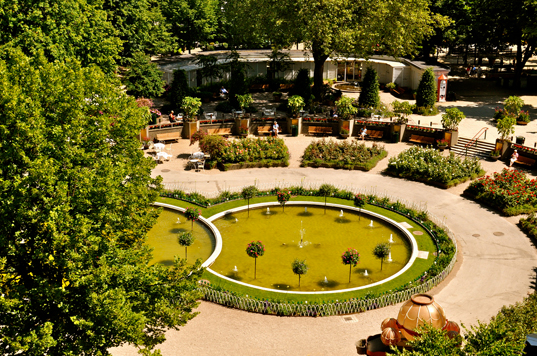
After seeing one of the city’s newer areas, I figured it was time to hit Copenhagen’s most famous landmarks. I walked along Stroget, the busy pedestrian street, stopping at Royal Copenhagen to check out the beautiful tabletop displays (the porcelain company has been supplying the royal family since 1775). Passing through King’s New Square, home of the imposing Royal Danish Theatre and Hotel D’Angleterre (the 1795 grand dame undergoing a major renovation to be unveiled next year), I ended up on Nyhavn, perhaps the city’s prettiest street, lined with brightly colored 17th and 18th century buildings. Once a hangout for rowdy sailors, it now lures tourists wanting to dine in one of the many upscale restaurants facing the canal. After snapping photos at Amalienborg Palace, the residence of the royal family, I walked back to the harbor where I marveled at the Copenhagen Opera House across the water, a breathtaking modern building designed by Henning Larsen. And I couldn’t pass up visiting Tivoli Gardens. I hate to use the word amusement park because this historic complex that dates from 1843 is so much more – a mix of exotic architecture, adrenaline pumping rides, arcade games, sophisticated restaurants, food stands, a concert hall, man-made lakes—even a brightly lit faux Taj Mahal. It was an absolute delight.
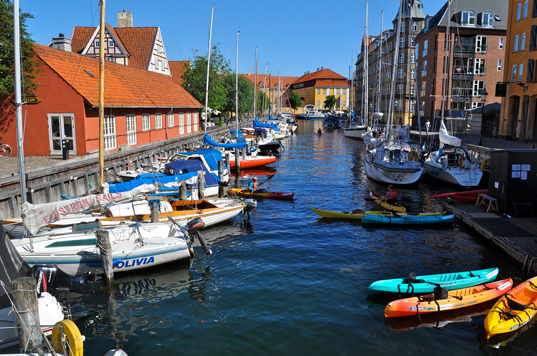
Back at Ibsen’s, my hotel on Nansensgade, a happening street filled with design stores, antique shops and cafes, I joined owner Kirsten Brochner in the lobby lounge where a jazz trio was playing and guests and locals sipped spiced mulled wine. She explained that of the four boutique properties owned by her family, this is the most art-oriented. It’s decorated with textiles, tiles and second-hand books from neighboring stores (a co-op concept similar to Jaegersborggade) and leather tags are attached to the room keys. Another unique aspect is that it bills itself as the world’s first hotel to accept payment in the form of Artmoney. Started in 1998 by Danish artist Lars Kraemmer, the Artmoney organization is a group of registered artists who created 7X5 inch “bills” to pay for services in shops around the world that choose to accept them (one Artmoney is 200 Danish kroner, about $40). The artwork for the bills is framed and hangs on the walls of the lounge.
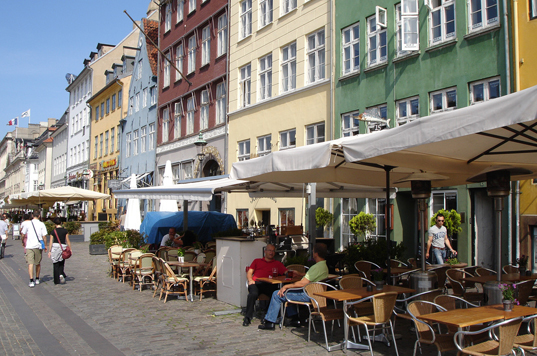
On my final day, I headed to the town of Charlottenlund along the coast (easily reached by train) to visit the Ordrupgaard Art Museum. The museum is housed in the former mansion of businessman and art collector, Wilhelm Hansen, with an extension designed by Zaha Hadid added in 2005. There I found Monets and Pissarros along with work by Danish artists Christen Kobke and Vilhelm Hammershoi. Also on the grounds is the home of Finn Juhl, the modern Danish architect and designer. The two men just happened to be neighbors and the Ordrupgaard took over the Juhl house in 2008 making this museum complex a must for art and design fans. Juhl, who designed the Trusteeship Council Chamber of the United Nations, lived here until his death in 1989. Take the tour of the compact but brilliantly laid out house filled with his well known furniture including the perfectly proportioned Poet loveseat and the wood and leather Chieftain chair. In 2012 Denmark is celebrating the 100th anniversary of Juhl’s birth with special exhibitions in museums across the country.
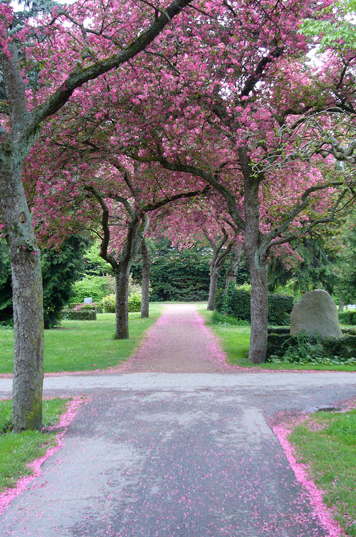
When I exited the train back in Copenhagen, I found myself at Israel Plads, a cobbled square that’s now home to a brand new food hall, Torvehallerne. At this sleek and modern glass structure you can pick up just caught lobster and shrimp, charcuterie, Danish blue cheese, vegetables, freshly baked bread, and local specialties like hand-dipped chocolate, mustard, jam and licorice. It’s also home to a branch of Coffee Collective. I had one of the best lattes along with a red velvet cupcake (yes, the cupcake craze has hit Denmark) on a square where vendors have been selling their wares since 1889. As I took in the scene and thought about everything I’d seen in my all too brief stay, I realized that Copenhagen is the perfect mix of the old and the new.
*For information on guided tours, contact Kristine of CPH: Cool at www.cphcool.dk.
[alert type=white]
The international dialing code for Copenhagen is 45.
Where to Sleep:
Ibsen’s – An art themed hotel at the intersection of Nansensgade and Vendersgade with minimalist rooms, a stylish lobby lounge and a small library. You can rent bikes here and the owner might even give you a spin in her tiny electric car.
23 Vendersgade; 3313-1913; www.ibsenshotel.dk
Hotel Admiral – Located on the harbor near Nyhavn, this elegant hotel, housed in a building dating from 1787, offers 366 rooms (some with views of the royal palace or the opera house) as well as Salt Restaurant serving modern Nordic cuisine.
24 Toldbodgade; 3374-1414, www.admiralhotel.dk
Nimb – Overlooking Tivoli Gardens, this posh boutique has just 14 lavishly decorated rooms (many with fireplaces), the Michelin-starred Restaurant Herman and Bar Nimb in the high-ceilinged former ballroom outfitted with crystal chandeliers.
5 Bernstorffsgade; 8870-0000; www.nimb.dk
Where to Eat and Drink:
Kiin Kiin – A Michelin-starred restaurant serving gourmet Thai food from well-known Danish chef Henrik Yde-Andersen. Start with a drink in the downstairs lounge, then head upstairs for dishes like scallops with lemongrass and duck with red curry.
21 Guldbergsgade; 3535-7555; http://kiin.dk
Norrebro Bryghus – A popular brewery and restaurant opened by a former Carlsberg brewmaster with beer tastings, beer-infused dishes on the menu, a bustling bar serving an ever-changing selection of hand-crafted beers and ales and an outdoor seating area.
3 Ryesgade; 3530-0530; www.norrebrobryghus.dk
Manfred’s – Ex El Bulli and Noma chef Christian Puglisi’s tiny spot grew so quickly, it more than doubled its size by taking over a former paint shop next door. Enjoy modern Danish small plates and biodynamic wines at the counter or at one of the tables.
40 Jaegersborggade; 3696-6593; www.manfreds.dk
What to See and Do:
Assistens Cemetery – This leafy resting ground in the center of Norrebro is the final resting place of Little Mermaid and Ugly Duckling author Hans Christian Andersen, philosopher Soren Kierkegaard and Nobel-prize winning physicist Niels Bohr.
4 Kapelvej; 3537-1917; www.assistens.dk
Tivoli Gardens – Join Danish families in their tradition of strolling through this beloved fairy tale-like amusement park in the city center. After playing an arcade game or taking a thrilling rollercoaster ride, enjoy some hot apple cider and roasted chestnuts.
3 Vesterbrogade; 3315-1001; www.tivoli.dk
Ordrupgaard Art Museum – Take the train from centrally located Norreport Station for the ten minute ride to the seaside town of Charlottenlund to view French and Danish paintings as well as take a tour of the home of modern Danish designer and architect Finn Juhl. 110 Vilvordevej; 3964-1183; www.ordrupgaard.dk
[/alert]

